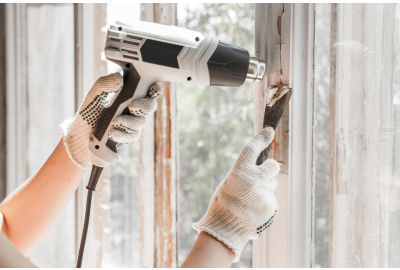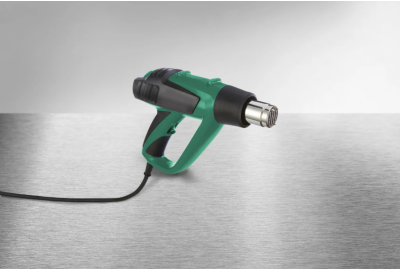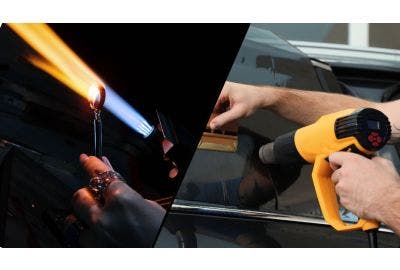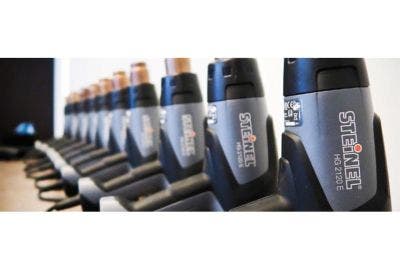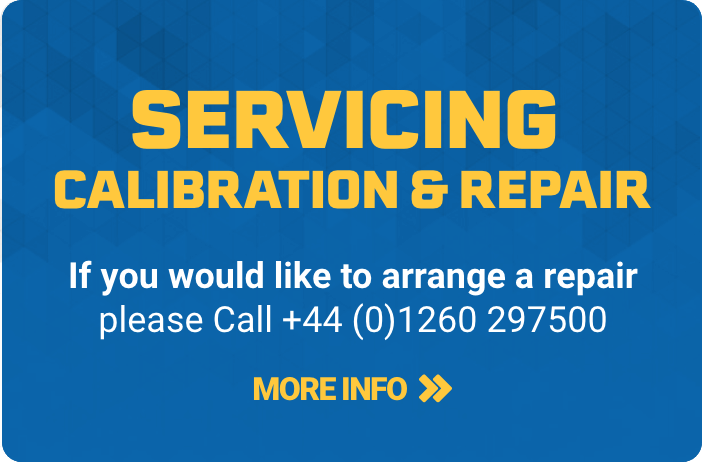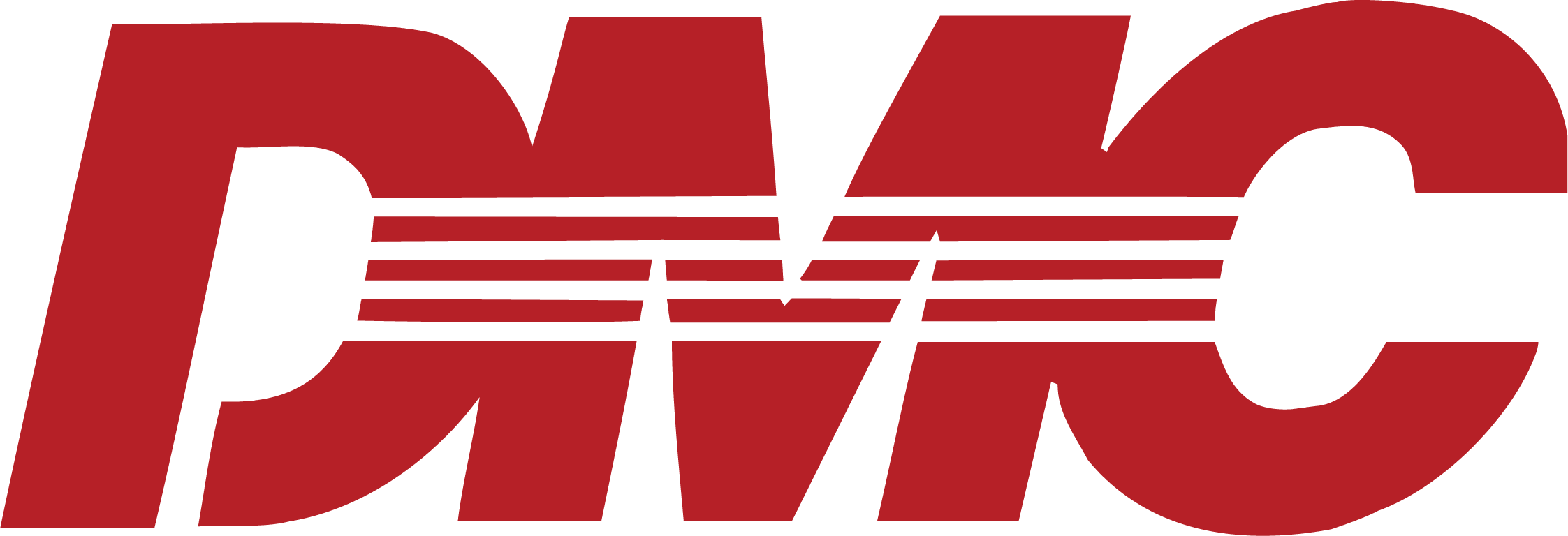Heat guns have become essential tools for various industries and home improvement projects.
Their versatility and efficiency make them popular among professional craftsmen and DIY enthusiasts. Understanding the different types of heat guns and their specific uses can significantly enhance the effectiveness and safety of your work.
This comprehensive guide will cover all aspects of heat guns, from basic functionality to diverse applications. Whether you're a seasoned professional or a novice user, this heat gun buyer’s guide offers valuable insights into choosing the right heat gun, using it safely, and maintaining it for long-lasting performance.
We will explore the types of heat guns available, key features to consider when purchasing, and expert tips to maximise the use of this versatile tool.
So if you are ready to enhance your knowledge and skills with heat guns - let's start right from the beginning and uncover everything you need to know about these powerful tools.
What is a Heat Gun?
A heat gun is a versatile tool that emits a stream of hot air, which can be used for various applications ranging from simple household tasks to professional industrial projects. It works by drawing in air, heating it using a heating element, and then blowing it out through a nozzle at high speed.
The history of heat guns dates back to the 1930s, initially developed for industrial applications, yet over the years, their design and functionality have evolved significantly, making them accessible and useful for a broader range of tasks.
Modern heat guns come equipped with advanced features such as adjustable temperature controls, multiple airflow settings, and a variety of nozzle attachments to cater to different needs.
Common components of a heat gun include a motor, a heating element, a fan, and a nozzle. The motor powers the fan, which pushes air over the heating element, producing hot air that is directed through the nozzle. This simple, yet effective, design makes heat guns a go-to tool for many applications.
Heat guns are used in various industries, including electronics, automotive, construction, and home improvement. They can be used for tasks such as stripping paint, bending plastic, thawing frozen pipes, and even crafting. Their ability to deliver controlled heat makes them invaluable in situations where precision and safety are paramount.
Types of Heat Gun
When selecting a heat gun, understanding the different types available is crucial. Each type has its unique features, benefits, and suitable applications. Here, we will explore the main categories of heat guns: electric, gas-powered, and infrared.
Electric Heat Guns
Electric heat guns are the most common type on the market and are widely used for both professional and DIY projects. These types of heat guns are powered by electricity and typically offer a range of temperature settings and airflow rates.
Features and Benefits
Electric heat guns usually come with adjustable temperature controls, allowing users to select the precise temperature required for their task. Many models also feature variable speed settings for airflow, making them versatile for various applications.
Common Uses and Suitability
Electric heat guns are ideal for tasks such as paint stripping, shrinking plastic tubing, thawing frozen pipes, and drying materials. Their versatility and ease of use make them suitable for both professionals and hobbyists.
Typically, they tend to be corded, but there are several heat guns available as a cordless option. More often than not, this will impact your price point due to this feature.
Pros and Cons
Pros: Electric heat guns have an incredible ease of use, feature adjustable temperature settings, and are widely available.
Cons: Sometimes corded heat guns can limit mobility, however here at Heamar we do supply cordless/battery-operated heat guns to eliminate this issue.
Gas-Powered Heat Guns
Gas-powered heat guns are less common than electric models but offer certain advantages, especially in outdoor or remote work environments where a constant electricity supply may not be readily available.
Features and Benefits
These heat guns use propane or butane gas as a power source, making them portable and convenient for use in locations without electrical outlets. They generally heat up quickly and are suitable for heavy-duty tasks.
Common Uses and Suitability
Gas-powered heat guns are often used in roofing, welding, and other outdoor applications where portability and high heat output are necessary.
Pros and Cons
Pros: Portable, quick heat-up time, high heat output.
Cons: Requires gas cartridges, can be more expensive to operate, safety concerns with gas usage.
Infrared Heat Guns
Infrared heat guns represent a more specialised category, using infrared technology to emit heat. These are often used for specific applications that require controlled and focused heating.
Features and Benefits Infrared heat guns emit heat in the form of infrared radiation, which is absorbed by the surface being heated. This method provides precise control and reduces the risk of damaging surrounding areas.
Common Uses and Suitability Infrared heat guns are ideal for paint stripping, drying, and curing applications. They are particularly useful in situations where focused heat is needed without disturbing adjacent areas.
Pros and Cons
Pros: Precise heating, reduces the risk of damaging adjacent areas, energy-efficient.
Cons: Limited to specific applications, usually more expensive, slower heating time compared to other types of heat guns.
Choosing the right type of heat gun—whether electric, gas-powered, or infrared—ensures you have the most effective tool for your specific tasks, enhancing both efficiency and safety in your projects.
Choosing the Right Heat Gun for Your Needs
Selecting the right heat gun is essential for achieving the best results in your projects. Here are some important factors to help you make the right choice:
Assessing Your Specific Needs
Identify the main tasks you’ll be using the heat gun for, whether it's home improvement, professional repairs, or industrial applications. Understanding the specific requirements of your tasks will guide you in selecting the most suitable type and model.
Evaluating Features and Specifications
Consider the key features and specifications of various heat gun models:
- Temperature Control: Look for models with adjustable temperature settings to handle a range of tasks.
- Power Source: Decide between electric, gas-powered, or infrared heat guns based on your usage environment and portability needs.
- Nozzle Attachments: Check if the heat gun comes with or is compatible with different nozzles to expand its functionality.
- Safety Features: Ensure the heat gun has built-in safety features like thermal cut-out and cool-down modes.
Gathering Reviews and Recommendations
Look for reviews from other users to understand the real-world performance of different models. Check online reviews and forums, and ask for recommendations from professionals or friends who use heat guns. Firsthand experiences can provide valuable insights into the reliability and efficiency of specific models.
Budget and Cost-Benefit Analysis
Your budget is an important factor in the decision-making process. While it’s tempting to opt for the cheapest model, investing in a higher-quality heat gun can be more cost-effective in the long run. Compare the features and performance relative to the price, and consider how often and intensively you will use the tool.
Choosing the right heat gun involves understanding your needs, evaluating key features, seeking advice from others, and balancing your budget with the benefits offered by different options. This careful approach will help you select a heat gun that delivers reliable and efficient performance for your specific tasks.
Key Features to Consider When Buying
When choosing a heat gun, it's important to focus on several key features to ensure you get the right tool for your needs.
Temperature Control and Range
Adjustable temperature settings are key for different tasks. Look for a heat gun that allows you to select the precise heat level needed, with a wide range to handle everything from delicate jobs to heavy-duty tasks.
Power Source and Wattage
Consider the power source and wattage of the heat gun. Electric heat guns are great for consistent power, while gas-powered options offer portability, ideal for outdoor use. Higher wattage provides faster heating, suited for intense tasks, while lower wattage is fine for lighter work.
Nozzle Types and Attachments
Different nozzles and attachments can greatly expand what your heat gun can do. Common types include concentrator nozzles for focused heat, reflector nozzles for working around pipes, and spreader nozzles for wider heat areas. Make sure your heat gun is compatible with a variety of attachments to increase its versatility.
Ergonomics and Safety Features
Comfort and safety are essential. Look for ergonomic designs that offer a comfortable grip and reduce hand fatigue during long use. Safety features like thermal cut-out, cool-down mode, and built-in stands prevent overheating and ensure safe operation. Lightweight models are also easier to handle, especially for detailed work.
By focusing on these features, you can find a heat gun that fits your needs and provides effective, safe, and comfortable use.
How to Use a Heat Gun Safely
Using a heat gun requires attention to safety to prevent accidents and injuries. Heat guns can reach very high temperatures, making safety precautions essential. Proper usage helps prevent burns, fires, and damage to materials. Here are some important steps to follow, to keep you, and those around you safe:
Personal Protective Equipment (PPE) Always wear appropriate PPE when using a heat gun. This includes:
- Heat-resistant gloves to protect your hands.
- Safety goggles to shield your eyes from debris and intense heat.
- Long sleeves and trousers to cover exposed skin.
- Respiratory protection if working with materials that release fumes.
Safe Operating Procedures Following safe operating procedures reduces the risk of accidents:
- Read the manufacturer's instructions before use.
- Ensure the work area is well-ventilated.
- Keep a fire extinguisher nearby.
- Avoid pointing the heat gun at yourself or others.
- Do not leave a running heat gun unattended.
- Allow the heat gun to cool down before storing it.
Tips for Avoiding Common Hazards To further ensure safety, consider these tips:
- Maintain Distance: Keep a safe distance between the heat gun and the surface being heated to avoid burns or fire.
- Stable Surface: Work on a stable surface to prevent the heat gun from falling.
- Monitor Heat: Constantly monitor the heat gun to prevent overheating of materials.
- Inspect Tool: Regularly inspect the heat gun for any damage or wear and tear.
- Cord Safety: Keep the power cord away from the nozzle to prevent melting or damage.
Sticking to these safety measures allows you to use your heat gun effectively while minimising the risk of accidents and injuries.
Creative and Practical Uses of Heat Guns
Heat guns are incredibly versatile tools with a wide range of applications, both in professional settings and home improvement projects. Here are some of the most common and innovative uses:
Home Improvement and Repairs Heat guns are handy for various household tasks, including:
- Paint Stripping: Efficiently remove old paint or varnish from multiple surfaces.
- Thawing Frozen Pipes: Safely thaw frozen pipes during winter to prevent them from bursting.
- Removing Adhesives: Soften and remove adhesives, stickers, and decals without damaging surfaces.
- Shrink Wrapping: Use for packaging items or insulating electrical wires with shrink tubing.
Industrial and Professional Applications In industrial settings, heat guns serve many critical functions:
- Welding Plastics: Use heat guns for welding and shaping plastic materials.
- Automotive Repairs: Remove dents, strip paint, or soften materials for reshaping.
- Electrical Work: Shrink insulation around wiring, remove solder, or bend PVC pipes.
- Drying and Curing: Speed up drying times for paints, adhesives, and other materials.
Unique and Innovative Uses Heat guns also find use in creative and less conventional applications:
- Craft Projects: Create art pieces by bending plastics, embossing, or applying heat transfers.
- Removing Floor Tiles: Soften adhesives under floor tiles for easier removal from a base surface.
- Cooking and Food Prep: In professional kitchens, heat guns can be used for tasks like skinning tomatoes or caramelising sugar (however this would normally be at volume - not so much for fine dining)
- Mould Making: You can heat and shape materials to create custom moulds for various projects.
From practical home repairs to creative art projects, heat guns offer endless possibilities for making tasks easier and more efficient.
Maintenance and Troubleshooting
To keep your heat gun in optimal working condition and extend its lifespan, regular maintenance and troubleshooting are essential. Here are some key tips:
Routine Maintenance Tasks Regular maintenance ensures your heat gun operates efficiently:
- Clean the Nozzle: After each use, clean the nozzle to remove any residue or debris that may have accumulated.
- Check the Air Vents: Ensure that the air vents are free from dust and obstructions to prevent overheating.
- Inspect the Cord: Regularly check the power cord for any signs of wear or damage. Replace it if necessary to avoid electrical hazards.
- Store Properly: Store the heat gun in a cool, dry place when not in use. Use the stand if it comes with one to keep the nozzle elevated and avoid contact with surfaces.
Cleaning and Storage Tips Proper cleaning and storage can prolong the life of your heat gun:
- Cool Down First: Allow the heat gun to cool down completely before cleaning or storing it.
- Wipe Down: Use a damp cloth to wipe down the exterior of the heat gun. Avoid using harsh chemicals.
- Cover Nozzle: Consider specifically covering the nozzle with a cap or cloth to protect it from dust and damage.
Common Problems and Solutions If your heat gun isn't working as expected, here are some common issues and how to address them:
- No Heat Output: Check the power source and ensure the gun is plugged in securely. Inspect the heating element for any damage.
- Overheating: Ensure the air vents are not blocked and clean them if necessary. Reduce the operating time and allow the gun to cool down periodically.
- Inconsistent Temperature: Verify the temperature settings and adjust them as needed. If the problem persists, the thermostat may need to be replaced.
When to Seek Professional Repair Services If you encounter issues that you can't resolve through basic troubleshooting, it's best at this point to seek professional repair services, and there are a couple of different options you may have:
- Electrical Problems: If you suspect an electrical fault, do not attempt to fix it yourself. Take the heat gun to a qualified technician.
- Persistent Issues: For problems that persist despite troubleshooting, a professional repair can ensure the heat gun is safely and effectively restored to working condition.
Make use of these maintenance and troubleshooting tips to ensure your heat gun remains reliable and effective for all your tasks.
Expert Tips and Tricks for Using Heat Guns
Heat guns are powerful tools that, when used correctly, can achieve professional results. Here are some expert tips and tricks to help you get the most out of your heat gun:
Techniques for Precise and Effective Use
- Keep Moving: Avoid holding the heat gun in one spot for too long to prevent overheating or damaging the material. Keep the gun moving in a steady, sweeping motion.
- Optimal Distance: Maintain an appropriate distance between the heat gun and the surface. Typically, 3-4 inches is ideal, but this can vary based on the material and task.
- Use Reflectors: For tasks like bending pipes or heat-shrinking, use reflector nozzles to evenly distribute heat around the object.
Advanced Applications and Tricks
- Paint Stripping: When removing paint, start with the lowest temperature setting and gradually increase if needed. Use a scraping tool to lift the paint as it softens.
- Welding Plastics: Heat the edges of the plastic pieces until they become tacky, then press them together firmly to weld. Use a welding nozzle for better control.
- Removing Adhesives: Soften adhesives on stickers or labels by gently heating them with the heat gun. Peel off the softened adhesive with a putty knife or scraper.
- Crafting and DIY Projects: Use a heat gun to create unique effects in crafts, such as embossing powders on paper or adding texture to paintings.
Prolonging the Life of Your Heat Gun
- Use Proper Nozzles: Ensure you are using the correct nozzle for each task to prevent overheating and improve efficiency.
- Monitor Temperature: Frequently check the temperature settings to ensure they are appropriate for the material and task at hand.
- Avoid Overuse: Give your heat gun a break during prolonged tasks to prevent overheating and wear on the motor.
- Regular Inspection: Periodically inspect the heat gun for any signs of damage or wear, and address any issues promptly to maintain its performance.
Resources for Further Learning and Skill Development
- Online Tutorials: Platforms like YouTube offer a wealth of tutorials on various heat gun applications and techniques.
- Workshops and Classes: Consider attending workshops or classes to learn advanced skills and safety practices.
- Instruction Manuals: Always refer to the manufacturer’s instruction manual for specific guidelines and safety information.
By applying these tips and tricks, you can enhance your skills and use your heat gun more effectively and safely.
Heat guns are versatile and powerful tools that can be incredibly useful for a wide range of tasks, from home improvement projects to professional applications. By understanding the different types of heat guns, key features to consider, and safe operating procedures, you should now be able to make an informed decision and subsequently use your heat gun effectively and safely.
We hope this guide has provided you with valuable insights and practical advice on heat guns. If you have any questions or would like to discuss more about the heat guns we have available, feel free to contact us here at Heamar.


